Abandoning Vietnam
MODERN WAR STUDIES
Theodore A. Wilson
General Editor
Raymond A. Callahan
Jacob W. Kipp
Allan R. Millett
Carol Reardon
Dennis Showalter
David R. Stone
James H. Willbanks
Series Editors
Abandoning Vietnam
How America Left and South Vietnam Lost Its War
James H. Willbanks
 University Press of Kansas
University Press of Kansas
2004, 2008 by the University Press of Kansas
All rights reserved
Published by the University Press of Kansas (Lawrence, Kansas 66045), which was organized by the Kansas Board of Regents and is operated and funded by Emporia State University, Fort Hays State University, Kansas State University, Pittsburg State University, the University of Kansas, and Wichita State University
Library of Congress Cataloging-in-Publication Data
Willbanks, James H., 1947
Abandoning Vietnam : how America left and South Vietnam lost its war / James H. Willbanks
p. cm. (Modern war studies)
Includes bibliographical references and index.
ISBN 978-0-7006-1331-1 (cloth : alk. paper)
ISBN 978-0-7006-1623-7 (pbk. : alk. paper)
ISBN 978-0-7006-2717-2 (ebook)
1. Vietnamese Conflict, 19611975. 2. Vietnamese Conflict, 19611975United States. I. Title. II. Series.
DS557.7.W55 2004
959.704'3373dc22
2004003407
British Library Cataloguing-in-Publication Data is available.
Printed in the United States of America
10 9 8 7 6 5 4
The paper used in the print publication is recycled and contains 30 percent postconsumer waste. It is acid free and meets the minimum requirements of the American National Standard for Permanence of Paper for Printed Library Materials Z39.481992.
This book is dedicated to Lt. Col. William B. Nolde, U.S. Army, killed in An Loc eleven hours before the cease-fire went into effect in January 1973; Warrant Officer Anthony Dal Pozzo Jr., U.S. Army helicopter pilot from the 1st Aviation Brigade, killed one hour and fifteen minutes after the cease-fire; and Cpls. Darwin Judge and Charles McMahon Jr., U.S. Marines, both killed during the U.S. evacuation of Saigon in April 1975. It is also dedicated to my father, James E. Willbanks, U.S. Army (Ret.), a great soldier who fought on the frozen battlefields of Korea as a member of the 15th Infantry Regiment, 3rd Infantry Division.
Contents
Illustrations
MAPS
CHARTS
TABLES
Preface to the Paperback Edition
When I began this book, there was no indication that the United States would become involved in a war in Iraq. The purpose of the book was to look at the long disengagement of the United States fromVietnam, focusing on Vietnamization, the withdrawal of U.S. troops, and the aftermath of the American departure from the war. The book sought to examine Vietnamization as an exit strategy. Part of the impetus for the book was that I had personally been involved in this process as an advisor with the Army of the Republic of Vietnam in 197172.
Historians are reluctant to draw lessons learned from historical events. History never repeats itself; there are just too many variables involved in situations that are separated in time. This is particularly true when comparing the wars in Vietnam and Iraq. There are more differences than similarities between the two wars, and because they differ in so many important ways, attempting to apply any lessons fromVietnam to the situation in Iraq is fraught with peril. That being said, however, there are some broad, general lessons learned in Vietnam that can inform U.S. actions, not only in Iraq, but in any contemporary situation in which the government of the United Statesor any other nation, for that mattercontemplates intervention and the use of military force. In such cases, just as the United States did in Vietnam, that government will eventually have to confront the issue of extricating itself from the conflict situation.
Leaving aside the complex and much-debated issues of why forces were committed to Iraq in the first place and how our effort there serves our national security interests, the U.S. focus in the beginning was on major combat operations: the defeat of Saddam Husseins regular forces. Once that was accomplished, the focus of the American effort in Iraq shifted to building a democratic Iraqi government and ensuring the presence of viable security forces that could take on the burgeoning insurgency. President George Bush said that U.S. forces would stand down when the Iraqis stood up. It occurred to me that this sounded familiar; it was, in effect, what Richard Nixon said in June 1969 at theMidway meeting with President Nguyen Van Thieu when he announced the first U.S. troop cuts and the initiation of the Vietnamization program. Nixons strategy of disengaging while building up the indigenous forces proved harder than first anticipated and ultimately had disastrous consequences for both the Republic of Vietnam and the United States.
The U.S. experience in extricating itself from the Vietnam War provides a number of insights at the strategic, operational, and tactical levels of war that may be applicable to the current situation in Iraq.As theWhite House and the Pentagon attempt to devise an exit strategy from Iraq, they will be confronted with the same challenges that faced the Nixon administration as it tried to find a way out of Vietnam. The central challenge at the strategic level is time. In Iraq, as in Vietnam, there was a constant tension between the progress of the Vietnamization effort and the patience of the American people, who had become increasingly polarized over the war effort. The longer it takes to stand up viable indigenous governmental and military institutions, the more fragile American will to stay the course becomes. In such a situation, senior commanders in Vietnam were forced to operate in an environment that risked being driven by politics more than sound military judgment. This is no less true today in Iraq.
At the operational level, there are several parallels that may inform contemporary U.S. efforts in prosecuting the war in Iraq. As the U.S. civil and military leadership contemplate American troop withdrawals, they will face the same challenges that Nixon and Abrams faced: the continuing need to maintain security for the advisory effort with a downwardly spiraling level of U.S. combat troops while at the same time working as rapidly as possible to hand the battle off to the indigenous government and its security forces.
At a time when many in and out of the army recognize a need to institutionalize an ability to field advisors, the Vietnamization experience provides many insights. For example, at the tactical level, there are any number of key parallels between the U.S. advisory effort in Vietnam and the way ahead for U.S. forces in Iraq. The U.S. army is now putting emphasis on military transition teams (MTTs), which have been charged with organizing and training the Iraqi security forces. MTTs are experiencing some of the same types of problems that the advisors in Vietnam experienced.
In the end, the U.S. exit strategy from Vietnam was fatally flawed, and the South Vietnamese were left to fend for themselves. They ultimately went down in defeat. The consequences of the U.S. disengagement in Iraq may be even more serious, both for American interests in the Middle East and the long-term viability of Iraq as a nation. For that reason, we might well revisit the lessons weve learned from the American experience in Vietnam. My hope is that this book might inform those charged with the avoidance of the same kind of potentially disastrous pitfalls that we experienced in Southeast Asia.


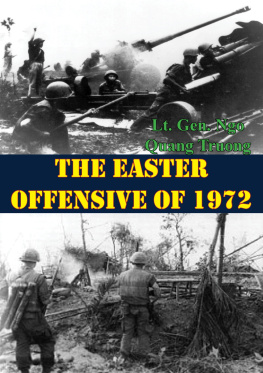

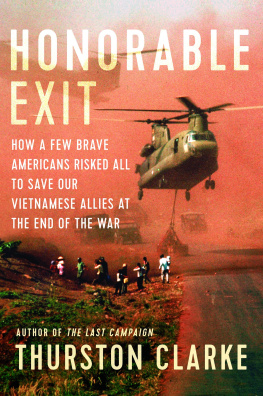

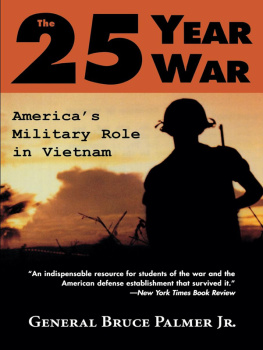
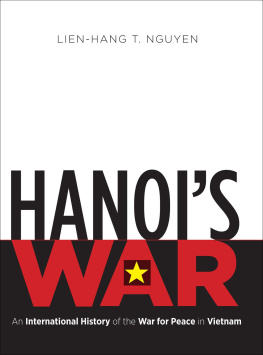
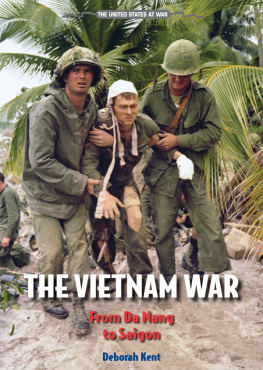

 University Press of Kansas
University Press of Kansas